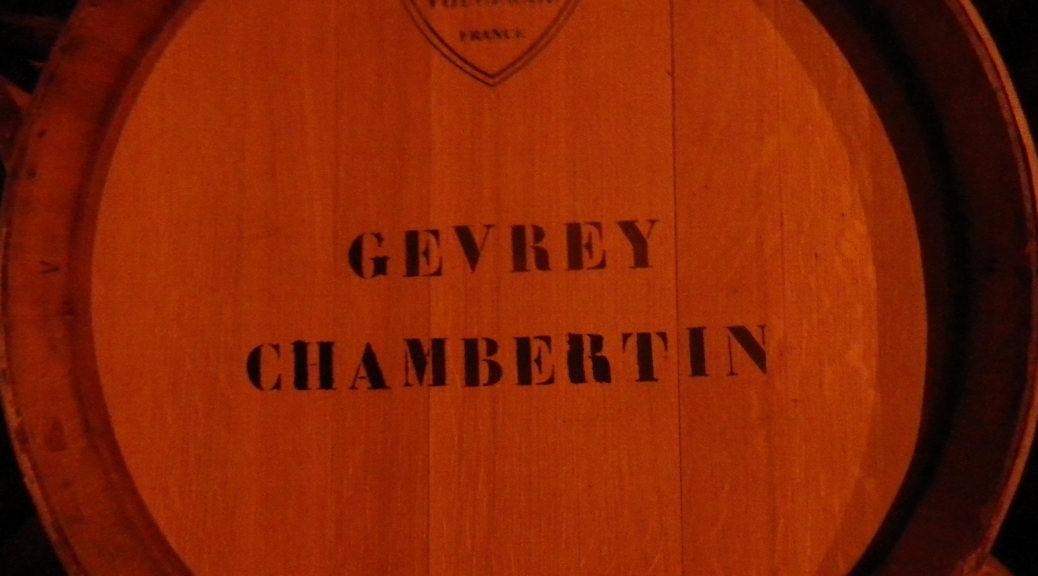What I Learned:
By way of overall explanation, the term Cote D’Or (Golden Slope) has a couple of meanings: it refers to a department in France, and it refers to a geological phenomenon, a large limestone ridge, that gives its name to a wine region. The wine region is subdivided into two sections: the northern Cote de Nuits, and the southern Cote de Beaune. This post covers the northern, Cote de Nuits, section, which runs from approximately just south of Dijon to just south of Corgoloin in Burgundy.
Talk about nuanced! Big names on plots of land sometimes only as large as two acres; whose individual vines are often owned by several vintners. But what wines these hundreds of small, named vineyards have produced over the past thousand years. The Grands Crus, the most prestigious vineyards, are also well-known because the most renowned have their names attached to the village they lie in. The village of Chambolle cites one of its most prestigious vineyards, Musigny, in its name – hence the village has become known as Chambolle-Musigny. Other nearby village-vineyard combinations include Gevrey-Chambertin, Morey-Saint-Denis and Vosne-Romanee, a tiny village whose fame is bigger than life among wine enthusiasts because of its two-acre-sized namesake.
Premier Cru and the village appellations within this region also result in excellent wines. (There are 14 villages/towns that fall within this appellation.) While the numerous premier cru vineyards are not as well-known outside Burgundy, their delicious wines, and those of village appellations, are more affordable.
The Cote de Nuits produces almost exclusively Pinot Noir. The grape varietal has been cultivated here for about 2000 years. It does well in limestone soils, and lying where it does just below a limestone ridge, Pinot Noir vines in Cote de Nuits do very well here indeed.
What makes a Pinot Noir from Gevrey-Chambertin different from a Pinot Noir from Vosne-Romanee is likewise very nuanced, depending on the vineyard of course, and the production techniques. The result is hundreds of unique Pinot Noir wines from this relatively narrow strip of land – an area that is walkable in two leisurely days.
Finally, because of its close proximity, a note on the Bourgogne Hautes-Cotes de Nuits appellation is in order. (In fact, the northern half of the Chemin des Grands Crus trail ends in Villars-la-Faye, a village within the Bourgogne Hautes Cotes de Nuits appellation.) Here, as the word “haute” implies, the vineyards are on plateaus higher up on the limestone slope, above and beyond the vineyards of the Cotes de Nuits appellations. Twenty communities overall, to include communities also within the Cote de Nuits appellations such as Nuits-Saint-Georges, Premeaux-Prissey, and Chambolle-Musigny, have vineyards within this designated area. This appellation, existing only since 1961, produces primarily, but not exclusively, red and rose wines.
What I Tasted:
2010 Chardonnay, Les Argillats, Appellation D’Origine Protegee Nuits-Saint-Georges, Domaine Louis Fleurot: a dry white wine with medium gold color: slightly spicy with notes of chalk and dried grass or hay.
2010 Pinot Noir, Clos Village, Appellation D’Origine Controllee Gevrey-Chambertin, Domaine Livera: red wine with dark red color and a full mouthfeel; overall sweet scent, with floral and herbal notes, slight smokiness and mild acidity.
2010 Pinot Noir, Les Genaivrieres, Appellation Vosne-Romanee, Domaine J. Cacheux et Fils: a dry red wine, with dark red color: very slight fruity nose of pinot noir grape, with very slight tannins, slight hint of oak, and a unique note of dried tropical fruit. Very well balanced.
2010 Pinot Noir, Vieilles Vignes, AOC Bourgogne Hautes-Cotes de Nuits: dry red wine with light red color; slight taste of smoke, mildly acidic.
2009 Pinot Noir, Vieilles Vignes, AOC Bourgogne Hautes-Cotes de Nuits-Villages, Domaine de Bollene: a dry red wine with light to medium red color; slight taste of smoke and oak, a hint of tar, and defined tannins.
2008 Pinot Noir, Nuits-Saint-Georges, Pascal Marchand: a dry red wine with dark red color; notes of red berries, a hint of wood, and mild tannins.
Cremant de Bourgogne, Blanc de Noir, Perle de Nuit, Appellation D’Origine Controllee Bourgogne, Louis Bouillot: a dry (Brut) white sparkling wine, a rose-tinted, medium gold color, with fine bubbles; this Pinot Noir-Gamay blend has a slightly floral taste, with a touch of yeastiness, and very mild acidity.
